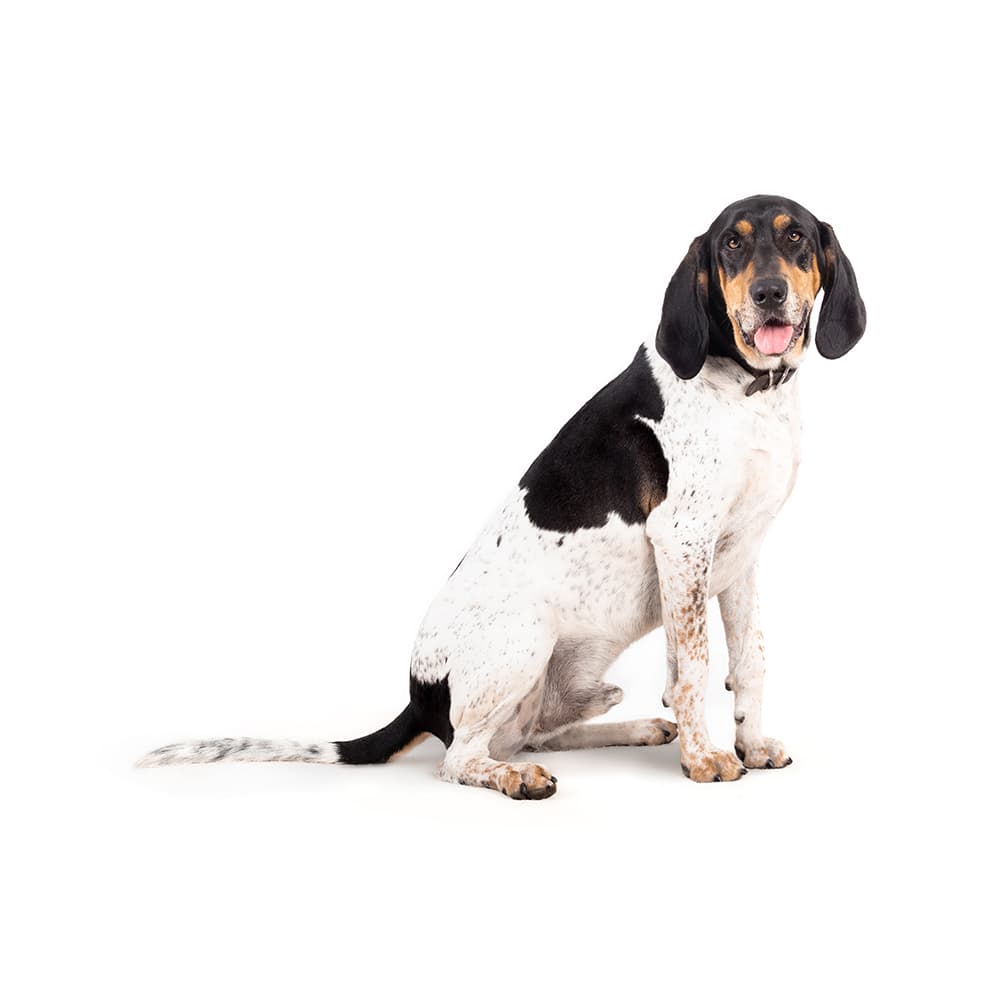Discover your dog's connection to this breed and 200+ others


Discover your dog's connection to this breed and 200+ others



The Bluetick Coonhound is an American breed that traces its lineage back to the English Foxhound and the French Staghound. These breeds were imported to the United States in the 17th and 18th centuries, and they were used as the foundation for several coonhound breeds. Specifically, Bluetick Coonhounds were recognized for their exceptional tracking and treeing skills in night hunts for raccoons.
Bluetick Coonhounds are deep-chested dogs, and therefore susceptible to bloat. This is a life-threatening condition that can come on suddenly, so it’s important to know the warning signs and get an affected dog immediate veterinary care. It is also recommended that their ears are checked often for changes and signs of infection. Genetic screening for hyperuricosuria, degenerative myelopathy, and other conditions can assist veterinarians with diagnosis and proactive care, as well as help breeders identify affected and carrier dogs.
Bluetick Coonhounds are known for their intelligence, loyalty, and tenacity. They are generally good-natured dogs that get along well with other dogs and children, making them suitable for families. However, their high energy levels and instinctual desire to chase and tree small animals mean they require plenty of exercise, and are not typically suitable for households with small pets.
As scent hounds, they have a very strong prey drive and can be single-minded when following a scent, which can sometimes lead to them being perceived as stubborn. Training should start at a young age and remain consistent throughout their lives. They are vocal dogs, with a distinctive baying bark, particularly if they pick up an interesting scent or are bored.
A canine genetic lineage is a group of individuals or entire breeds that descended from common ancestors predating modern breed formation. Often these lineages are associated with a ‘type’ of dog with a unique historical working role and associated behaviors (e.g., herding, scent hunting, etc.).
Scent Hounds were historically used as hunting dogs. They were bred for their exceptional sense of smell, which is also a defining factor of this lineage of dogs. Scent hounds also have a distinctive bark which sounds more like a howl, this was developed to communicate with their hunters. Many breeds within this lineage were bred to work in groups, and have a strong pack mentality. Scent Hounds tend to have a stronger drive to follow their nose instinctually than their human counterpart. Scent hounds are also known for their endurance and stamina, these traits allow them to follow scents over long distances and for long periods of time.
Example breeds with ancestry from this lineage include Basset Hound, English Foxhound, and Dachshund.
Bluetick Coonhounds are the American Kennel Club's 162nd breed.
Early Bluetick Coonhounds were used by people on the American frontier to hunt raccoons, but they also hunted in packs to take down bigger game, including the lynx, boar, and bear.
Raccoon-hunter lingo about certain breeds includes a "cold nose", which describes how Bluetick Coonhounds and similar breeds can work a scent trail that is hours or even days old.
Recommended by top vets with decades of experience
21 breeds
64 genetic health markers
50 genetic trait markers
